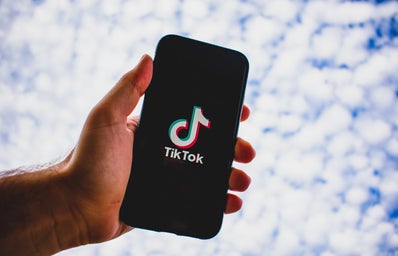If you are a frequent TikTok user, you might have noticed that the hit single Thot Shit hasn’t got its signature dance yet. Megan Thee Stallion released the song on June 11, 2021. It’s now November, but TikTokers haven’t done anything with it, despite the song’s fame. Usually, it takes no more than a couple of days or a week for the numerous talented dancers and choreographers on TikTok to showcase the right dance moves for a hit song, but this hasn’t been the case with Thot Shit.
The absence of a dance wasn’t because of Megan’s music but rather because of the tense climate on TikTok among creators. Since the declaration of the Black TikTok strike, there hasn’t been much activity in the dancing realm of the app.
What is the Black TikTok strike?
During the Black TikTok strike, it is essential for coloured creators not to release any new choreography. This strike aims to shed light on the lack of acknowledgement for Black creators compared to their white counterparts.
For example, two of the most famous TikTok dances to date include “Renegade” and “Savage”. Young Black creators created both of these iconic dances, however, they barely received any recognition. These dances only gained popularity when white TikTok stars like Charli D’Amelio and Addison Rae performed them.
“Renegade” by Jalaiah Harmon, a 16-year-old aspiring choreographer from Fayetteville, GA.
“Savage” by Keara Wilson, 20 years old, from Mansfield, OH.
Now there is absolutely nothing wrong with two white content creators recreating this dance, but the problem arises when people fail to acknowledge the original creators, who happen to be Black. It’s been a common trend in mainstream media, and to protest the absurdity of the mentality, Black content creators on TikTok went on a strike.
What led up to the strike?
To fully understand the significance of this strike, we must dive into the events which showcase the absence of recognition for Black creators.
The Jimmy Fallon Show
In March 2020, The Tonight Show Starring Jimmy Fallon hosted Charli D’Amelio and Addison Rae respectively on its segments, giving them the spotlight to perform some choreography.
After Addison Rae’s performance of eight signature TikTok routines, social media went into outrage; people were upset that the original creators didn’t get any credit. Addison choreographed none of the songs she danced to. Charli’s appearance followed a similar pattern of performing unoriginal dances and gaining attention from others’ work.
Shortly after public outcry, the late-night show went on to do some damage control and cited the original creators in the YouTube videos’ description box. It has also since invited some original creators of TikTok dances to appear, but it seems evident that this is done purely to conceal the adverse reactions to the show.
The fundamental problem here stems from the fact that coloured creators need to fight for attention. Can you imagine working hard only for your work to become famous on another person’s account?
2020 NBA All-Star game
A similar incident occurred at the 2020 NBA All-Star game, in which TikTokers Dixie D’Amelio, Charli D’Amelio and Addison Rae all received an invite thanks to their recent rise to stardom. Meanwhile, the actual choreographers didn’t receive anything.
When you realize the amount of profit the above-mentioned TikTokers are making from copying dances, you’ll recognize the absurdity of the situation. For example, Charli D’Amelio and Addison Rae are now each worth millions of US Dollars with their own brand deals, being partners with Dunkin’ Donuts, American Eagle and Fashion Nova, just to name a few.
Is this a new concept?
The phenomenon of white individuals making Black work popular isn’t new. This form of appropriation has been happening for years in the entertainment industry. A few prime examples come from within the music segment:
Led Zeppelin – “Whole Lotta Love “
This song is undeniably similar to “You Need Love” by Muddy Waters, written by Willie Dixon. The African-American blues singers went as far as to sue Zeppelin for the blatant resemblance between the two songs.
Little Richard – “Tutti Frutti “
This song was only made famous after Pat Boone, a white singer, sang the tune. After that, the piece was more appealing to the mass, as it gained much attention and praise.
George Harrison – “My sweet lord “
Harrison charted number one worldwide with this song; unfortunately, it copied many elements from The Chiffons’ “He’s So Fine” to achieve this accolade.
The act of stripping Black creators from their entitled recognition has been present throughout the centuries. Unfortunately, despite it being the year 2021, this concerning trend hasn’t stopped and continues to plague our society.
What can we do about it?
As consumers of content, we need to uphold the recognition of original creators. They should not be fighting daily to be recognized by the media. Instead, we need to stand up for these creators and ensure they get the praise and the monetary reward they deserve.
Next time you see a talk show host dismissing an artist’s hard work by not citing them, speak up — make your voice heard! Furthermore, try your best to support the content of Black artists, making them more known by promoting them on the TikTok algorithm so they can also receive equal opportunities.

